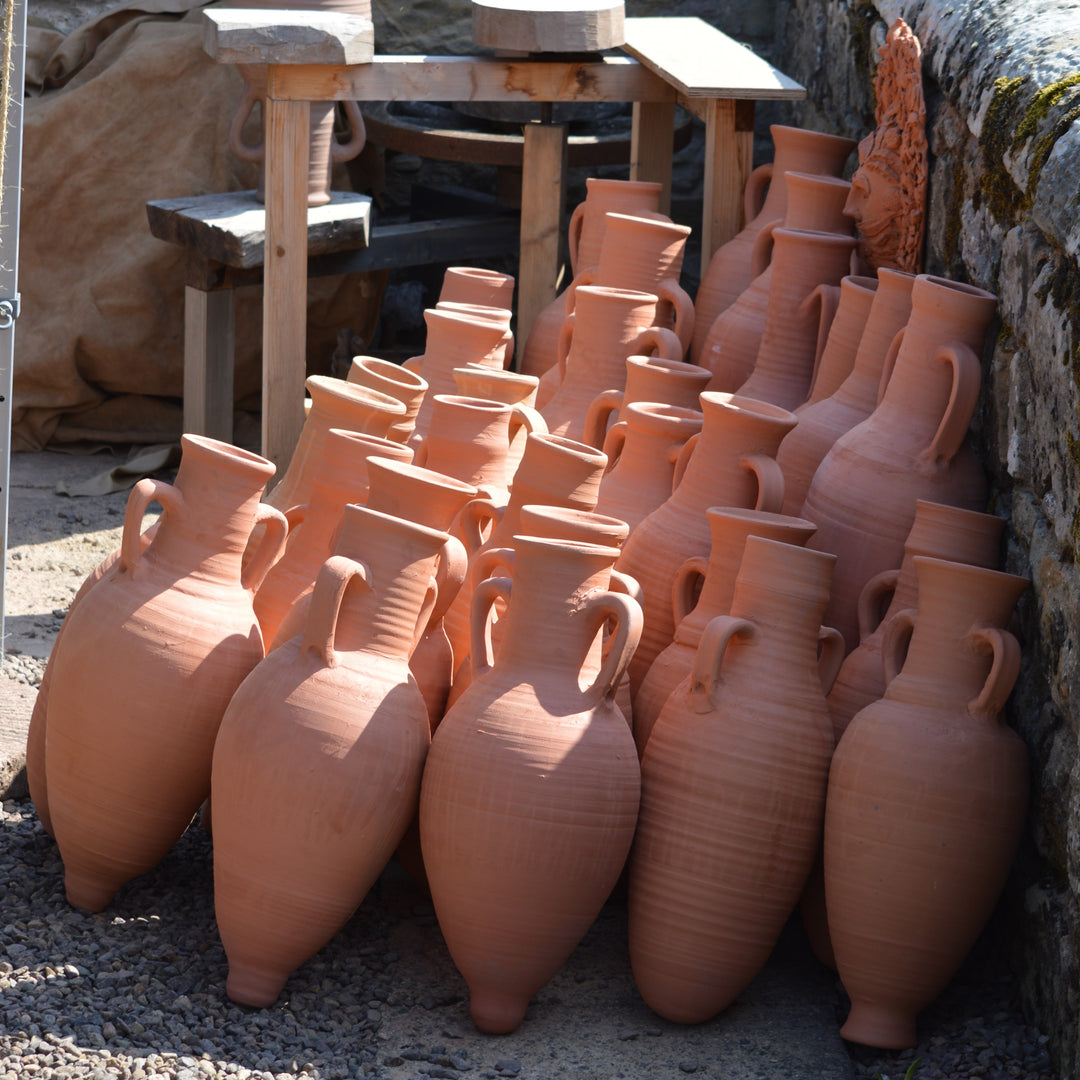Vindolanda Kiln Firing

Well, the Vindolanda firing over the weekend was a real mission!!!
With storm Kathleen bringing 70mph winds and causing problems for planes within the UK, it was little wonder that the high winds also caused problems with the kiln firing. The
ferocious wind was whipping through the firebox and up into the kiln at such a rate that, although it was oxygenating the fire, it was also cooling the pots. This has sadly meant that some of the pots show signs of dunting😢 (one of the many words potters use to describe cracking)
On the positive side, we learned a lot about how extreme wind can affect a firing, and we will be more prepared for windy weather in the future because, ultimately, we worked out strategies to get the temperature up despite the wind. It was a little late to save some of the pots, but there will be many more kiln firings and pots in the future. A bit more on this further down.
It was also amazing to talk to all of the visitors, but we would like to make a special mention to everyone who came specially to see us. We LOVED speaking to you and want to thank you for your support. It means everything to us.
Of course, we have to mention the incredible Vindolanda volunteers who helped during this battle of a firing during which we had to use more fuel than any of our previous firings. John, Ann and Pete put in a monumental effort to get us over the finish line; despite being tired by the end, they pushed through and helped to keep the spirit high—a massive thank you to you all.
So, we have learnt a few things: firstly, I don't think your average Roman potter would have bothered trying to fire a kiln on a blustery day like we had. I imagine they grew very adept at reading the weather and making an informed decision about whether to fire up the kiln or leave it for another day. Had we not also had the job of talking to all the fantastic visitors, we may have called it off ourselves.
Secondly, we learnt how to stoke the fire specifically for windy conditions. This involved packing the firebox so tight that only a small channel of air could get through over the top of the flames, limiting the amount of cold air getting into the kiln. However, this was a very careful balance, as entirely blocking the airflow would stop the heat from being drawn through the kiln, cooling the pots and possibly causing cracking. Honestly, pots love any excuse to crack.
We will also try a different capping technique next time we fire to see if we can better insulate the pots inside. It won't be entirely different from previous methods; it will be more of an improvement (hopefully) of what we have done previously. Watch this space!
We were also reminded that no matter how much we know about the pottery of the past, there is still so much more to learn, and that is extremely exciting.






Windy conditions are a pain. We use plywood baffles to restrict the wind near the fire pit, but variable winds can negate that measure. Experimental archaeology is all about learning.
On Tue, 09 Apr 2024 18:02:11 +0100 Sunny@comment.sunnysideapps.com <sunny@comment.sunnysideapps.com> wrote -———
PottedHistory replied:
Hi James, Yeah, we used Roman roof tiles to try and block the wind from entering the firebox, but sadly, the wind had other plans 😂 We often use the roof tiles in this way as they also block the heat from singeing our shins. Losing things is always disappointing, but we learn more when things go wrong. Thanks for getting in touch.
Leave a comment